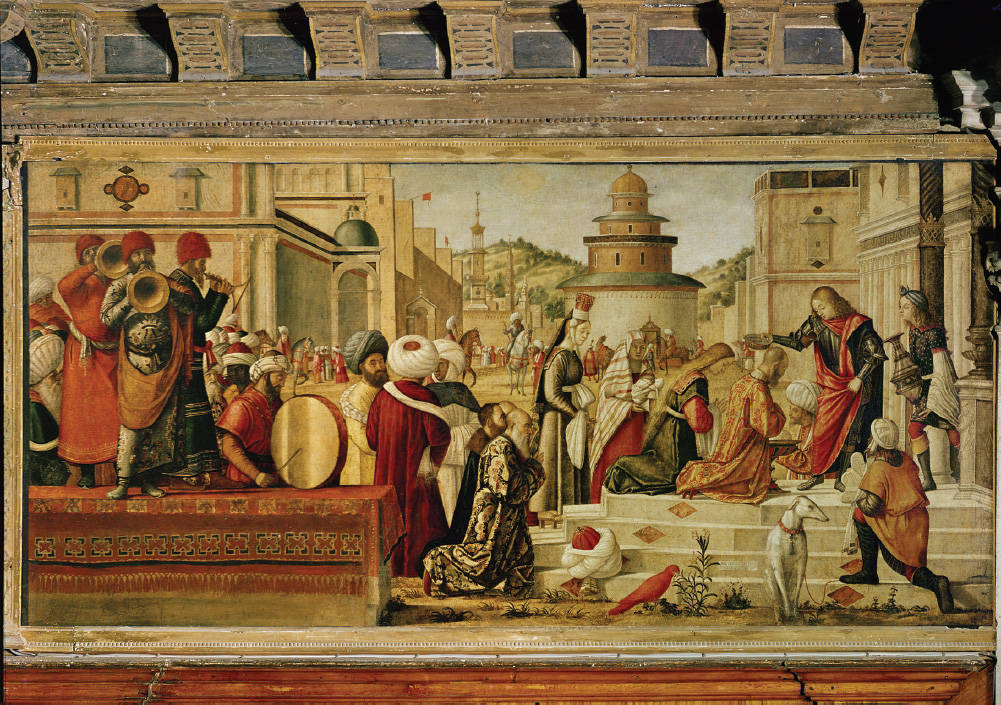Visual Source 12.4
St. George Baptizes the Pagans of Jerusalem
Despite the fluid relationship of Renaissance Europe with the world of Islam, the Ottoman Empire, apparently expanding inexorably, was a growing threat to Christian Europe, and Islam was a false religion to many Christians. Those themes too found expression in the art of the Renaissance. Visual Source 12.4 provides an example. Painted in 1507–1508 by the Venetian artist Vittore Carpaccio, it reflects the popular “orientalist” style with its elaborate and exotic depiction of eastern settings, buildings, and costumes. This particular painting was part of a series illustrating the life of Saint George, a legendary soldier-saint who had rescued a Libyan princess, slew the dragon about to devour her, and by his courageous example converted a large number of pagans to Christianity. Earlier paintings in this series portrayed the killing of the dragon, while this one shows the conversion of the infidels to the “true faith.”
The setting for Visual Source 12.4 is Muslim-ruled Jerusalem, where the action focuses on Saint George, on the right, baptizing a bareheaded Muslim ruler and a woman (perhaps his wife). Several others await their turns below the steps, while a group of Mamluk musicians play in honor of the occasion.

Question
What posture toward the Islamic world does this painting represent? Does it convey resistance to Ottoman expansion, or does it hold out the hope for the peaceful conversion of that powerful empire?
Question
What is the significance of the large Ottoman turban at the foot of the steps?
Question
Why might the legend of Saint George provide a potent symbol for European interaction with the Islamic world in the circumstances of the early sixteenth century?
Question
Compare this urban scene with that of Visual Source 12.2. What common features do you notice? Apart from any religious meanings, what do these paintings suggest about Venetian interests in the Islamic world?